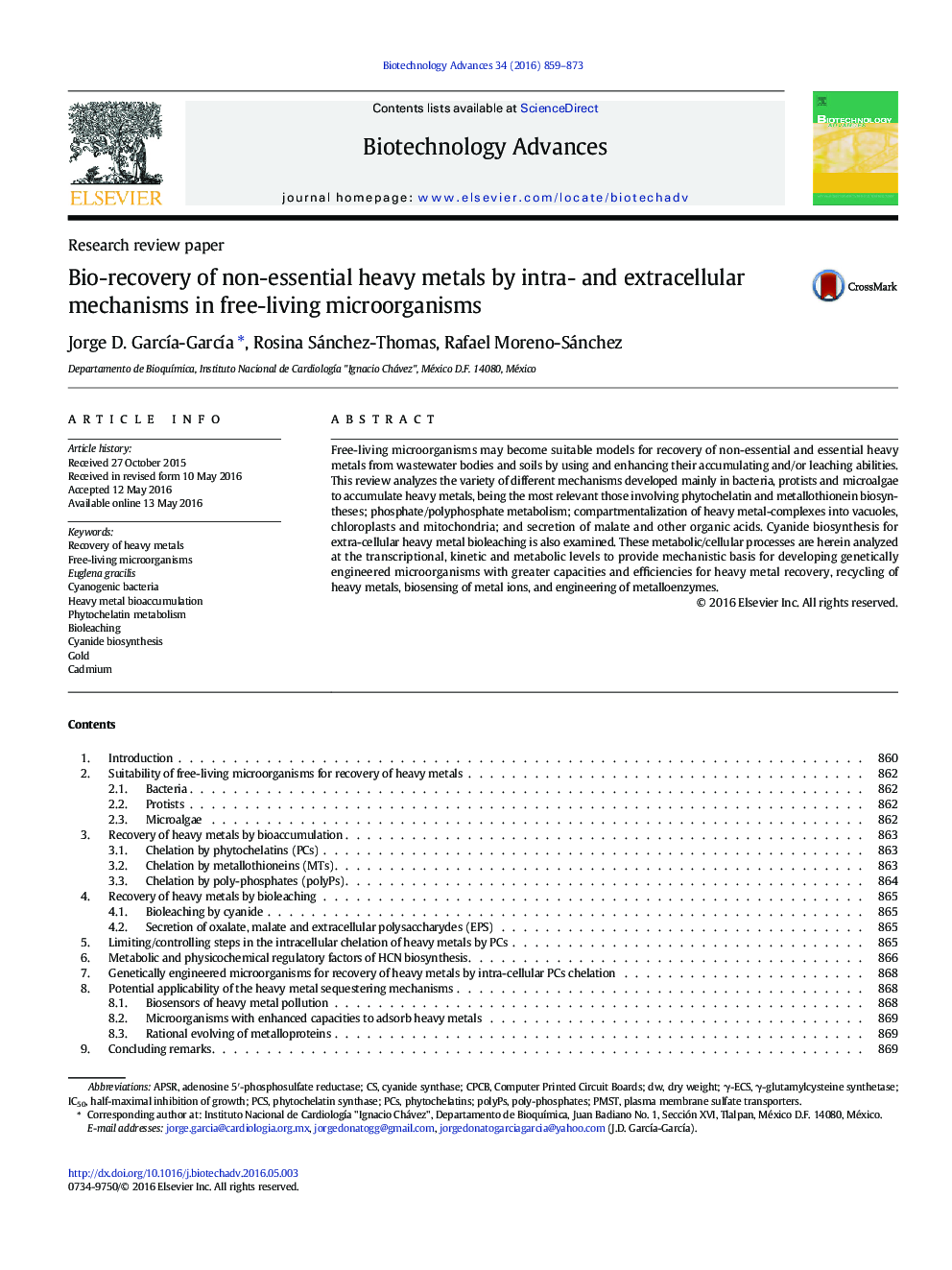| Article ID | Journal | Published Year | Pages | File Type |
|---|---|---|---|---|
| 6451226 | Biotechnology Advances | 2016 | 15 Pages |
â¢Free-living microorganisms have heavy metal recovery mechanisms.â¢Bacteria and protists have developed several mechanisms for heavy metal chelation.â¢Phytochelatin metabolism supports the intracellular accumulation of heavy metals.â¢Cyanide is a secondary metabolite useful for bioleaching of gold and other heavy metals.â¢Development of genetically-engineered microorganisms should include manipulation of the biosyntheses of phytochelatins and cyanide.â¢Understanding the metal recovery mechanisms will allow development of diverse biotechnological benefits, not only pollution issues.
Free-living microorganisms may become suitable models for recovery of non-essential and essential heavy metals from wastewater bodies and soils by using and enhancing their accumulating and/or leaching abilities. This review analyzes the variety of different mechanisms developed mainly in bacteria, protists and microalgae to accumulate heavy metals, being the most relevant those involving phytochelatin and metallothionein biosyntheses; phosphate/polyphosphate metabolism; compartmentalization of heavy metal-complexes into vacuoles, chloroplasts and mitochondria; and secretion of malate and other organic acids. Cyanide biosynthesis for extra-cellular heavy metal bioleaching is also examined. These metabolic/cellular processes are herein analyzed at the transcriptional, kinetic and metabolic levels to provide mechanistic basis for developing genetically engineered microorganisms with greater capacities and efficiencies for heavy metal recovery, recycling of heavy metals, biosensing of metal ions, and engineering of metalloenzymes.
